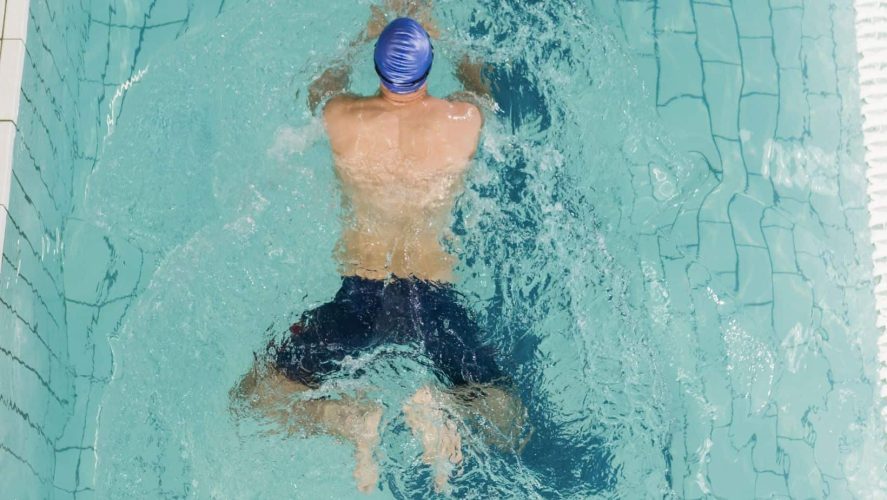Getting stitches is never fun, but it often can’t be avoided. If you enjoy swimming for exercise or recreation, having stitches may seem like it puts your favorite activity off limits. However, with some preparation and care, you can still swim without compromising your stitches. Here are some tips for keeping stitches dry and protected while swimming.
Evaluate Your Stitches
The first step is to check with your doctor about your specific stitch situation. Not all stitches are created equal, so you’ll want to find out:
Location of the stitches – Areas like the torso or limbs are easier to keep dry than joints. Stitches over joints may be difficult to protect.
Type of stitches – Some stitches dissolve over time, while others need removal. Non-dissolving stitches typically need more protection.
Age of stitches – Older, more healed stitches are safer to submerge than fresh ones. Stitches should stay dry for at least 2 weeks after placement.
Risk factors – Medical conditions like diabetes or taking medications like steroids can impair healing. These factors may mean stitches need longer protection.
Get your doctor’s guidance on swimming safety based on your stitches. They may recommend waiting if stitches are new or in high-motion areas. If swimming is approved, keep reading for protection tips.

Choose the Right Swimwear
The right swimwear can help keep stitches dry, protected, and comfortable in the water. Consider these options:
Rash guard – Snug-fitting shirt provides coverage over stitches on the chest, back, shoulders. Allows free arm movement.
Wetsuit – Neoprene or spandex suits cover large areas of the body, maintaining warmth while blocking water.
Dry suit – Waterproof suit with seals to keep the entire body dry. Ideal for total stitch protection.
Swim leggings – Covers stitches on hips, legs. Paired with rash guard for full coverage.
Look for close-fitting fabrics without dragging material that could irritate stitches. Change out of wet swimwear promptly after swimming to stay dry.
Use Waterproof Bandages
Covering stitches with waterproof bandages or dressings adds an extra layer of protection. Options include:
- Plastic wrap – Applied directly over dry stitches, plastic wrap creates a water barrier. Must be replaced after each swim.
- Tegaderm bandage – Advanced transparent film seals around stitches, allowing for visibility. Can be worn for several days.
- Hydrocolloid bandage – Absorbent dressing contains a water-repellent outer layer. Helps keep stitches dry.
- Kinesiology tape – 100% waterproof athletic tape adheres over stitches. Stretchy material moves with the body.
- Swimming plaster – Special waterproof tape or patches stick directly onto skin. Reusable for multiple swims.
Use the right bandaging method for your stitch location. Always check bandages afterward for any moisture that got through.

Take Extra Precautions
A few additional precautions will help keep your stitches clean, dry and safe:
- Shower before swimming – Start with clean, dry skin and stitches to prevent infection.
- Avoid pools with heavy chlorine – The chemical can be harsh on healing skin and stitches. Opt for saltwater or freshwater.
- Dry thoroughly – Gently pat dry around stitches and bandages after swimming. Ensure no lingering moisture.
- Moisturize – Keep skin around stitches flexible and healed using gentle, unscented lotions after swimming.
- Check stitches – Inspect closely for irritation, openings, or other problems after swimming. Report any concerns to your doctor.
- Limit swim time – Start with short swims of 15-20 minutes to minimize water exposure. Build up gradually.
- Avoid submerging head – Keeping stitches above water further limits moisture contact. Use backstroke or vertical swimming.
Stay alert for any signs of complications and take prompt medical action if stitches appear affected after swimming.
Alternative Water Activities
If your doctor recommends avoiding swimming altogether, you can still stay active in the water with lower-risk options like:
Water walking – Special shoes or flotation devices allow you to walk in the pool, keeping your head and stitches above water.
Water aerobics – Do monitored exercises in shallow water without fully submerging your body and stitches.
Lap swimming with buoy – Use a flotation device under your arms to stay on top of the water and avoid saturating stitches.
Talk to your doctor about modified water activities that may work for your situation if regular swimming is off the table. Stay positive – with some adaptation, you can likely find a safe way to enjoy the water while your stitches heal.
Have Patience During the Healing Process
Being limited in your favorite activities can be frustrating. But take heart that your swimming restrictions are only temporary. Follow your doctor’s recovery guidelines, keep stitches clean and dry, and attend all follow-up appointments. Before you know it, your stitches will be out and you’ll be back doing laps at full speed.
Conclusion
In the meantime, listen to your body. Don’t rush back into swimming before you’ve completely healed. Taking the proper precautions with your stitches now means you can get back to swimming safely and avoiding complications. Be diligent with wound care, and you’ll be zipping through the water again in no time!


